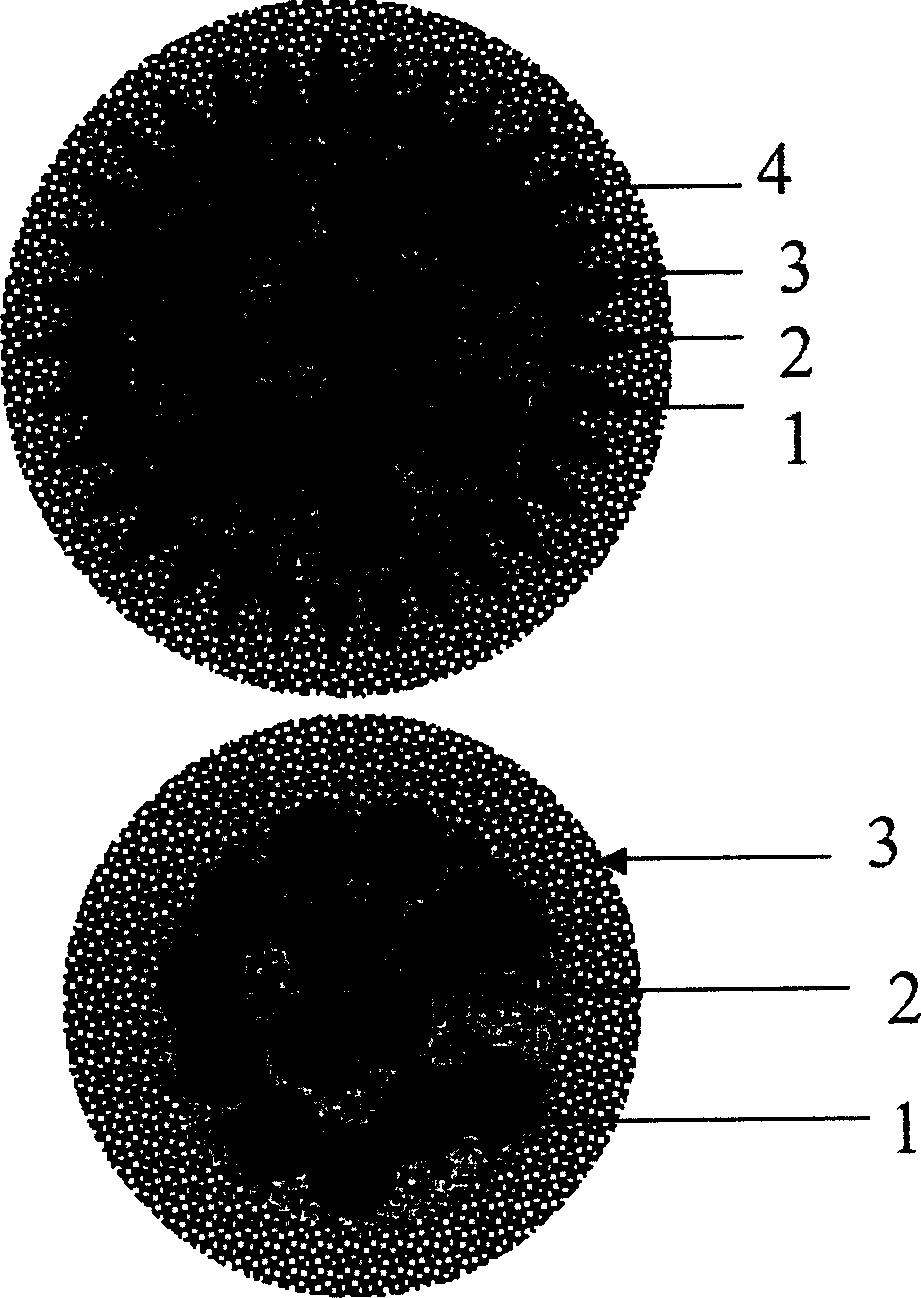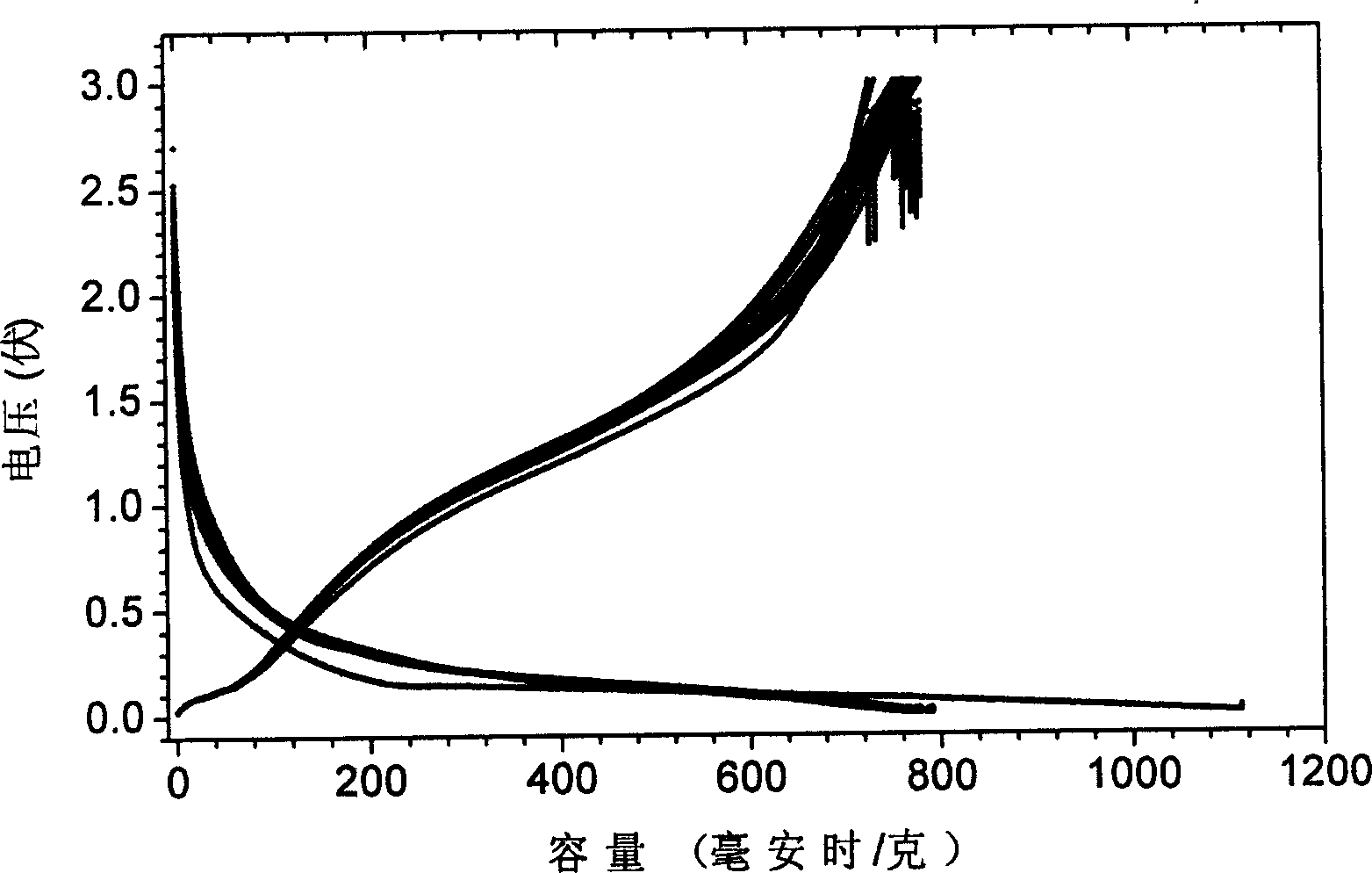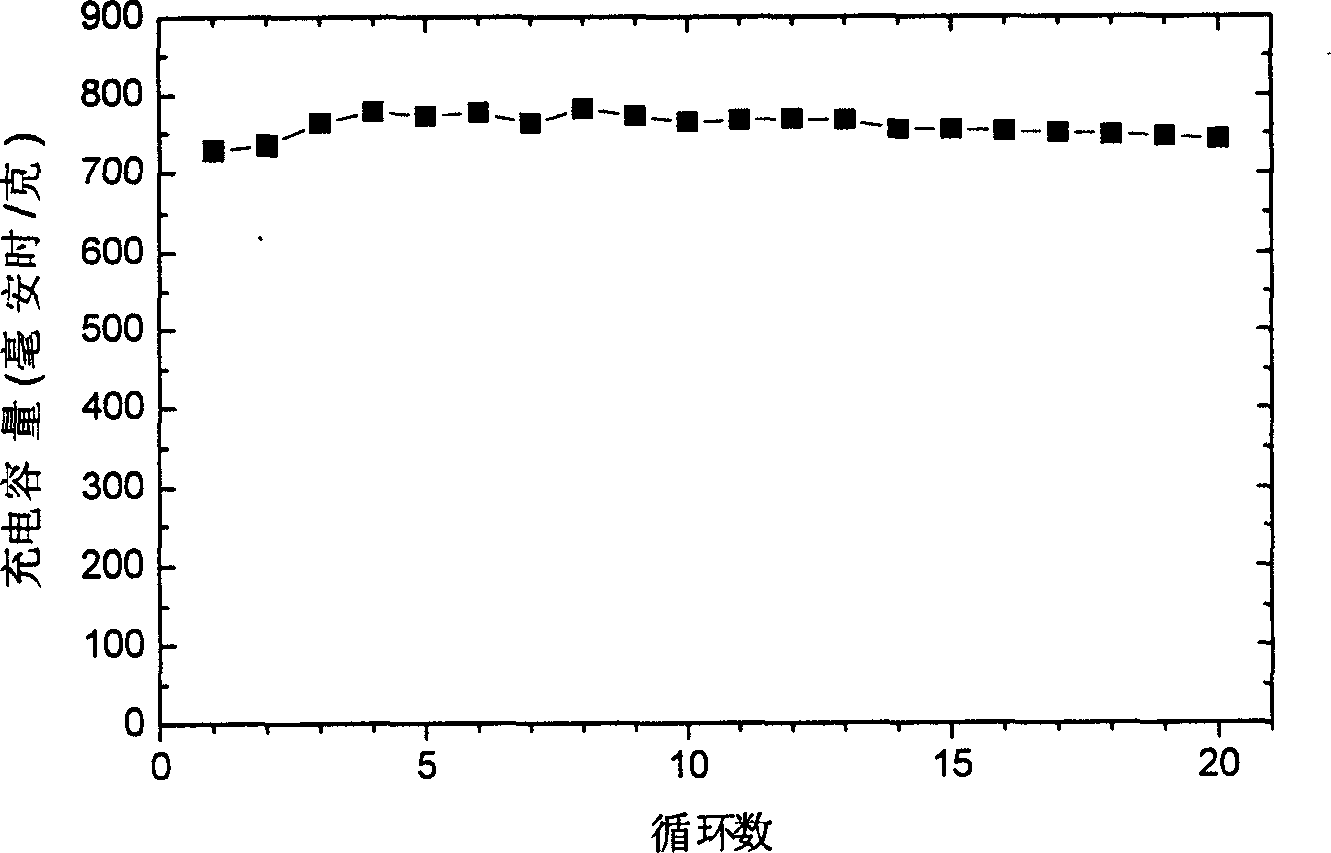Negative electrode active material and use of secondary lithium battery
A negative electrode active material, secondary lithium battery technology, applied in battery electrodes, active material electrodes, circuits, etc., can solve the problems of high delithiation potential, poor cycle performance of negative electrode active materials, low Coulombic efficiency, etc., to avoid growth and Decomposition and irreversible capacity loss reduction effect
- Summary
- Abstract
- Description
- Claims
- Application Information
AI Technical Summary
Problems solved by technology
Method used
Image
Examples
Embodiment 1
[0075] Embodiment 1, using mechanical method to prepare the negative electrode active material containing chromium oxide
[0076] (1) The dried commodity Cr 2 o 3 (irregular geometric shape, particle size is 100 nanometers to 20 microns) mixed with carbon black (average particle size is 40 nanometers) as a conductive additive in a weight ratio of 10:1, mechanical ball milling (rotating speed is 500 rpm, 6 hours ) to obtain internal composite particles; (2) mechanically mill the internal composite particles and sucrose in a weight ratio of 1:1 (rotating speed is 150 rpm, 1 hour) to obtain a uniformly dispersed mixture; (3) the mixture , pyrolyzed under high-purity nitrogen, the pyrolysis steps are: first use 4 hours to raise the temperature from room temperature to 400°C, then use 10 hours to raise the temperature from 400°C to 700°C, then keep the temperature at 700°C for 12 hours, and finally use 2 Hour down to room temperature, obtain the inner composite particle that has ...
Embodiment 2
[0084] Embodiment 2, use hydrothermal method to prepare the negative electrode active material II containing manganese oxide
[0085] (1) dry manganese oxide MnO (average particle diameter is 10 microns) is mixed with acetylene black (average particle diameter is 10 nanometers) as conductive additive by the weight ratio of 5: 1, after mechanical ball milling (rotating speed is 500 rev / / Minutes, 6 hours), the mixture is heat-treated under high-purity nitrogen. The steps of heat treatment are: first use 2 hours to raise the temperature from room temperature to 600 ° C, keep the temperature at 600 ° C for 1 hour, and then use 2 hours to cool down to room temperature to obtain a surface The internal composite particle covered with carbon layer; (2) put the internal composite particle into an autoclave, add 20% sucrose aqueous solution in advance in the autoclave, the filling degree is 80v%, the weight ratio of sucrose to internal composite particle 2:1, the reactor was heated at ...
Embodiment 3
[0088] Embodiment 3, use mechanical method to prepare negative active material III containing vanadium oxide
[0089] (1) The dried V 2 o 3 (average particle diameter is 50 microns) and the graphite powder (particle size is 20 microns) as conductive additive is mixed by the weight ratio of 20: 1, mechanical ball milling (rotating speed is 500 rev / mins, 6 hours), obtains inner composite particle; ( 2) mechanically milling the internal composite granules and water-soluble starch at a weight ratio of 20:0.25 (add a small amount of water during ball milling, the rotating speed is 150 rpm, 2 hours), and dry the evenly mixed mixture to remove water; (3 ) pyrolyzes the mixture under high-purity argon, and the steps of pyrolysis are as follows: first use 2 hours to heat up from room temperature to 300°C, then use 10 hours to heat up from 300°C to 500°C, and then keep the temperature at 500°C for 8 hours Finally, drop to room temperature with 2 hours to obtain the internal composite ...
PUM
| Property | Measurement | Unit |
|---|---|---|
| Particle size | aaaaa | aaaaa |
| Particle size | aaaaa | aaaaa |
| Diameter | aaaaa | aaaaa |
Abstract
Description
Claims
Application Information
 Login to View More
Login to View More - R&D
- Intellectual Property
- Life Sciences
- Materials
- Tech Scout
- Unparalleled Data Quality
- Higher Quality Content
- 60% Fewer Hallucinations
Browse by: Latest US Patents, China's latest patents, Technical Efficacy Thesaurus, Application Domain, Technology Topic, Popular Technical Reports.
© 2025 PatSnap. All rights reserved.Legal|Privacy policy|Modern Slavery Act Transparency Statement|Sitemap|About US| Contact US: help@patsnap.com



